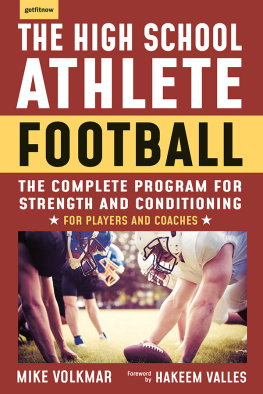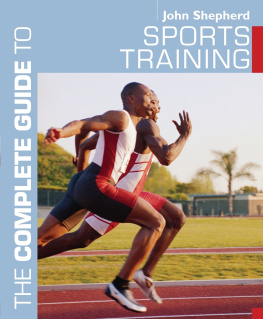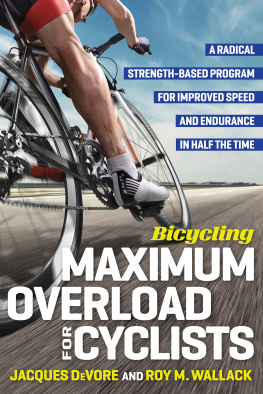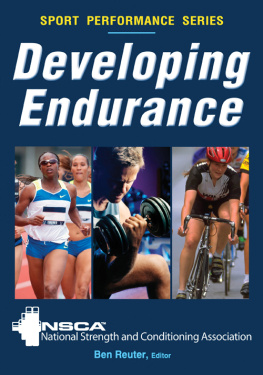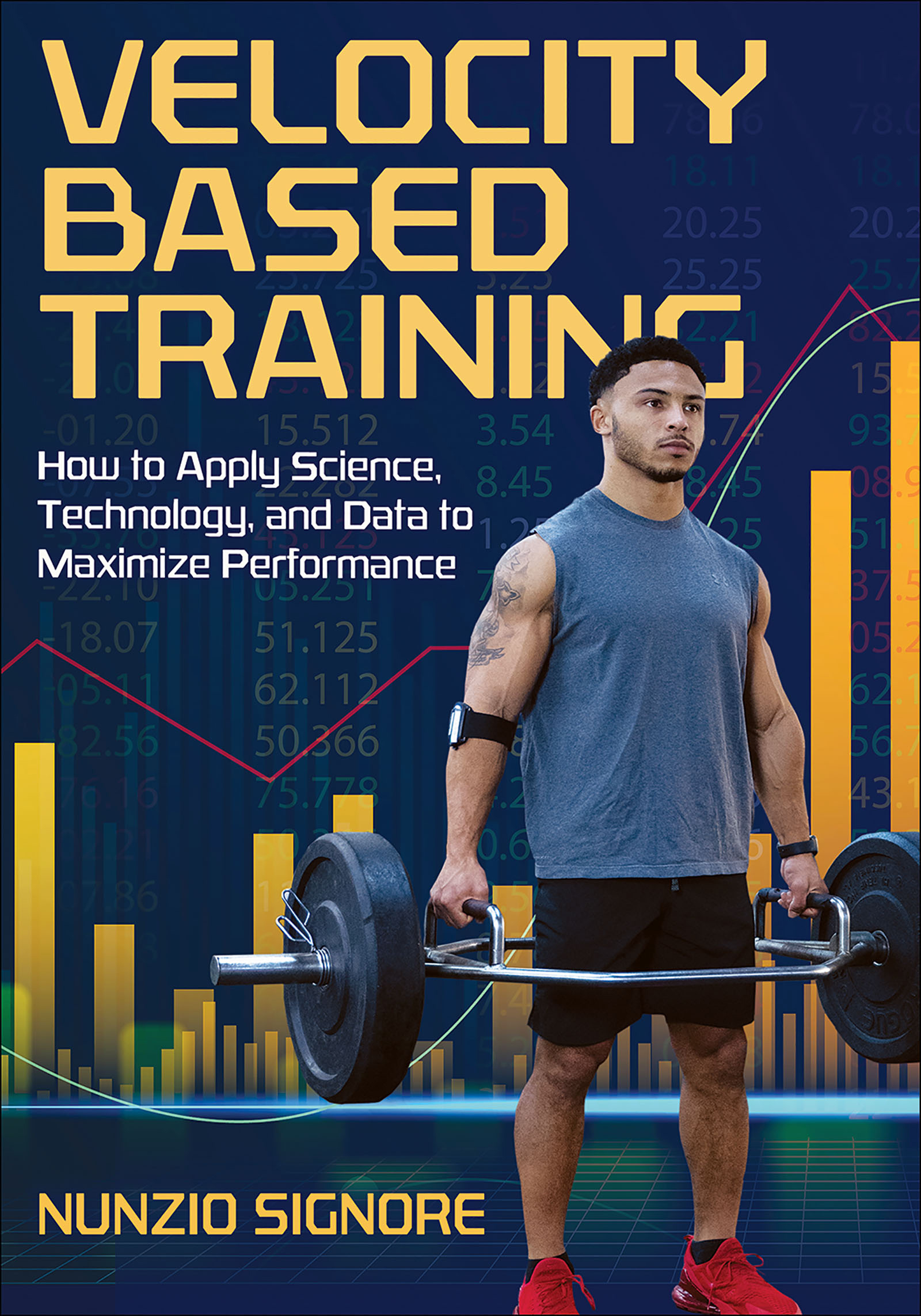Contents
Guide
Pagebreaks of the print version
Velocity-Based Training
How to Apply Science, Technology, and Data to Maximize Performance
Nunzio Signore
CSCS, NASM, FMS
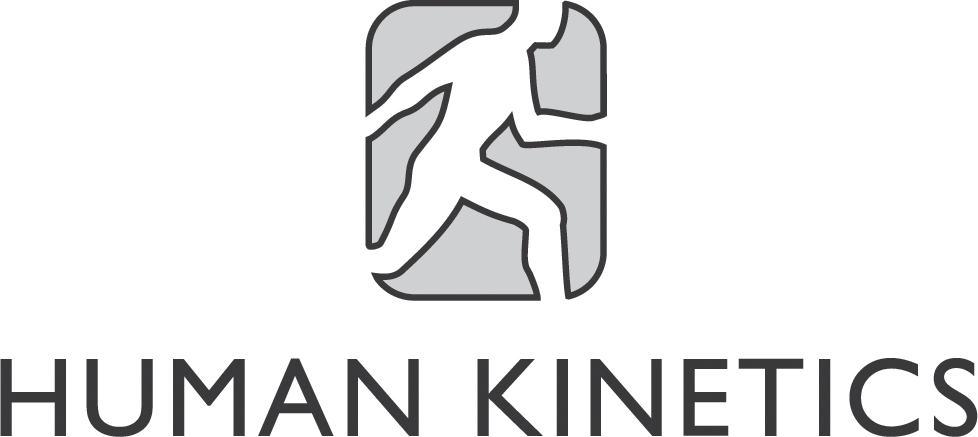
Library of Congress Cataloging-in-Publication Data
Names: Signore, Nunzio, 1962- author.
Title: Velocity-based training : how to apply science, technology, and data to maximize performance / Nunzio Signore.
Description: Champaign, IL : Human Kinetics Inc., [2022] | Includes bibliographical references and index.
Identifiers: LCCN 2020054190 (print) | LCCN 2020054191 (ebook) | ISBN 9781492599951 (paperback) | ISBN 9781492599968 (epub) | ISBN 9781492599975 (pdf)
Subjects: LCSH: Athletes--Training of. | Sports--Technological innovations. | Speed.
Classification: LCC GV711.5 .S56 2022 (print) | LCC GV711.5 (ebook) | DDC 613.7/1--dc23
LC record available at https://lccn.loc.gov/2020054190
LC ebook record available at https://lccn.loc.gov/2020054191
ISBN: 978-1-4925-9995-1 (print)
Copyright 2022 by Nunzio Signore
Human Kinetics supports copyright. Copyright fuels scientific and artistic endeavor, encourages authors to create new works, and promotes free speech. Thank you for buying an authorized edition of this work and for complying with copyright laws by not reproducing, scanning, or distributing any part of it in any form without written permission from the publisher. You are supporting authors and allowing Human Kinetics to continue to publish works that increase the knowledge, enhance the performance, and improve the lives of people all over the world.
To report suspected copyright infringement of content published by Human Kinetics, contact us at permissions@hkusa.com. To request permission to legally reuse content published by Human Kinetics, please refer to the information at https://US.HumanKinetics.com/pages/permissions-information.
This publication is written and published to provide accurate and authoritative information relevant to the subject matter presented. It is published and sold with the understanding that the author and publisher are not engaged in rendering legal, medical, or other professional services by reason of their authorship or publication of this work. If medical or other expert assistance is required, the services of a competent professional person should be sought.
The web addresses cited in this text were current as of November 2020, unless otherwise noted.
Acquisitions Editor: Michael Mejia; Developmental Editor: Laura Pulliam; Managing Editor: Miranda K. Baur; Copyeditor: Amy Pavelich; Indexer: Nan N. Badgett; Permissions Manager: Martha Gullo; Graphic Designer: Julie L. Denzer; Cover Designer: Keri Evans; Cover Design Specialist: Susan Rothermel Allen; Photograph (cover): Background Berkah/Getty Images, model Human Kinetics, Inc.; Photographs (interior): Joseph LaTona, LT Visual Media/ Human Kinetics, Inc., unless otherwise noted; Photo Asset Manager: Laura Fitch; Photo Production Specialist: Amy M. Rose; Photo Production Manager: Jason Allen; Senior Art Manager: Kelly Hendren; Illustrations: Human Kinetics, Inc.; Printer: Versa Press
We thank Rockland Peak Performance in Paramus, New Jersey, for assistance in providing the location for the photo shoot for this book.
Human Kinetics books are available at special discounts for bulk purchase. Special editions or book excerpts can also be created to specification. For details, contact the Special Sales Manager at Human Kinetics.
Printed in the United States of America10987654321
The paper in this book is certified under a sustainable forestry program.
Human Kinetics
1607 N. Market Street
Champaign, IL 61820
USA
United States and International
Website: US.HumanKinetics.com
Email: info@hkusa.com
Phone: 1-800-747-4457
Canada
Website: Canada.HumanKinetics.com
Email: info@hkcanada.com
E8147

This book is dedicated to my wife, Tracey, and my daughter, Maia, for putting up with my crazy and constant desire to learn and create, which can render me temporarily unavailableeven when Im home and many times in the same room. This was no more evident than during the COVID-19 pandemic, when we quarantined for four months in our home in New York.
Contents
Foreword
Nunzio Signore is one of the most passionate, intelligent, and infinitely curious coaches in the strength and conditioning profession. As he proves in this book, he is rapidly becoming a pioneer and one of the go-to guys for everything related to velocity-based training (VBT). His work has been an inspiration to us here at the Florida Baseball Ranch, where we train high-level throwing athletes. We have been utilizing VBT for a little over a year, and our results are remarkable. The introduction of VBT to our process has amped up our trainings specificity while providing objective, measurable feedback and fresh motivation for our athletes.
When it comes to getting the best return on training time, specificity rules. Most coaches and instructors would agree that to get the most bang for your training buck, the activities you choose should be as specific as possible to the performance outcome you desire. Throughout strength trainings history, many well-intentioned coaches with incomplete information (myself included) have overused, misinterpreted, and misapplied this concept of specificity. Somewhere along the way, in our pursuit of specific outcomes, solid strength training practices morphed into a load-averse process that became known as functional training. The original idea may have been sound, but its application watered down the results.
Nunzio Signore understands that while a solid foundation in traditional slow, heavy lifting is vital for any athlete, it doesnt address the temporal dimension of specificity. For high-intensity sports skills that present significant time constraints, traditional strengthening may not be enough to train an athlete to produce force quickly enough to meet the demands of competition. VBT, by providing external feedback on the speed at which we are moving either our body or an object, brings attention to not only the force side of the power equation, but the velocity side as well, helping to solve this dilemma.
VBT also takes care of the biotensegral dimension. Muscles dont sit on bones ready to produce power, coordinate and control your movements, or protect inert, non-contractile tissue (such as ligaments, bones, fascia, and joints). They hang off like a sagging rope. Before you can express power, coordinate and control your body, or protect inert tissue, you must remove the slack from the system. In a high-intensity, athletic movement, the best way to remove muscle slack is through isometric co-contraction of all the muscles around a joint or limb. When co-contractions are properly sequenced and synergized throughout the kinetic chain, several benefits are attained: sheer forces are dampened, power is amplified, and connective tissue is protectively wrapped in a blanket of stability. The movement becomes smooth and effortless, and the athlete can accomplish task-related goals while conserving energy and minimizing injury risk.



